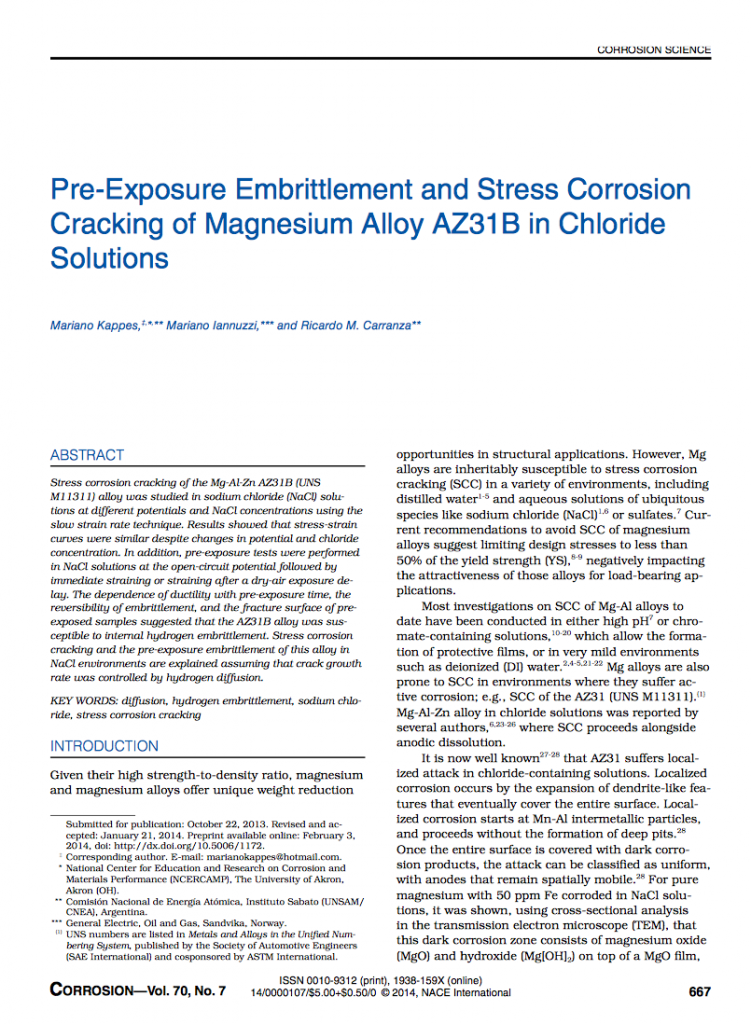This article is the second part of our adventure into the realm of environmentally assisted cracking (EAC) of magnesium alloys. We were curious about the apparent disagreement over the relative effect of hydrogen on the EAC of magnesium alloys. Thus, together with my colleagues and good friends Dr. Mariano Kappes and Prof. Ricardo M. Carranza, we designed an experimental matrix aimed at quantifying the possible influence of hydrogen on EAC, separating its effects from those of anodic processes occurring during stress corrosion cracking (SCC).
Why is it important?
Based on the reversibility of the pre-exposure embrittlement effect, we were able to demonstrate that the AZ31B alloy was, indeed, susceptible to internal hydrogen embrittlement. The width of the annular brittle region observed in post-exposure fractography, doubled with a fourfold increase in pre-exposure time, suggesting that hydrogen diffusion controlled pre-exposure embrittlement. Similarly, pre-corroded tensile samples of AZ31B Mg alloy showed a decrease in ductility and UTS that was a function of the pre-exposure time. In all cases, the loss of ductility, which was not influenced by chloride concentration, was partly recovered by exposure to dry air. Moreover, results conclusively showed that anodic processes were not rate-controlling. It is plausible to assume that other high-strength magnesium alloys could exhibit a similar behavior.
Abstract
Stress corrosion cracking of the Mg-Al-Zn AZ31B (UNS M11311) alloy was studied in sodium chloride (NaCl) solutions at different potentials and NaCl concentrations using the slow strain-rate technique. Results showed that stress-strain curves were similar despite changes in potential and chloride concentration. In addition, pre-exposure tests were performed in NaCl solutions at the open-circuit potential followed by immediate straining or straining after a dry-air exposure de-lay. The dependence of ductility with pre-exposure time, the reversibility of embrittlement, and the fracture surface of pre-exposed samples suggested that the AZ31B alloy was susceptible to internal hydrogen embrittlement. Stress corrosion cracking and the pre-exposure embrittlement of this alloy in NaCl environments are explained assuming that crack growth rate was controlled by hydrogen diffusion.

[altmetric doi=”10.5006/1172″ type=”donut” condensed=”true” data-hide-no-mentions=”false” popover=”right” details=”right”]
Kudos insights
Citation
Kappes, M., Iannuzzi, M. & Carranza, R. M. “Pre-Exposure Embrittlement and Stress Corrosion Cracking of Magnesium Alloy AZ31B in Chloride Solutions.” Corrosion 70, 667-677, doi: 10.5006/1172 (2014).